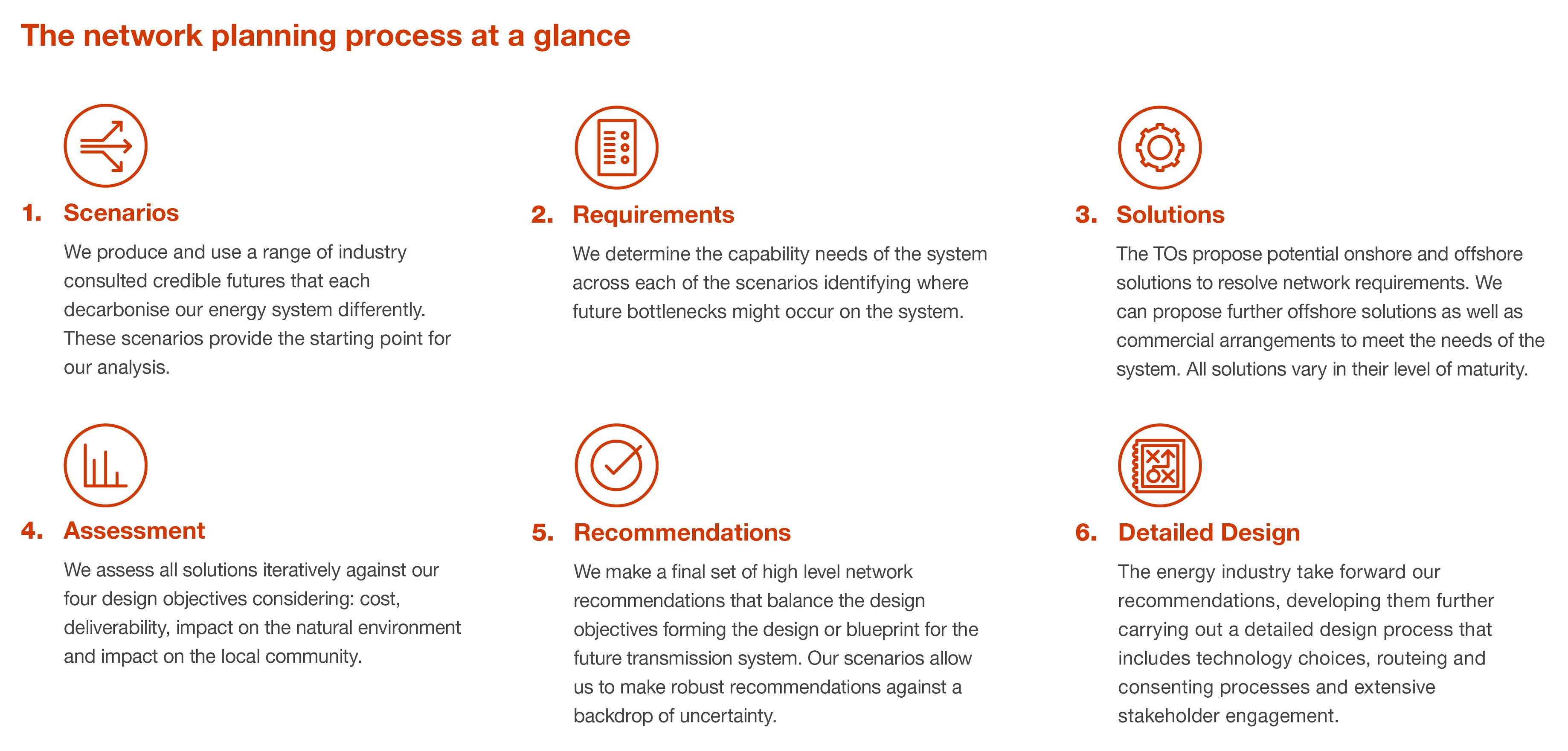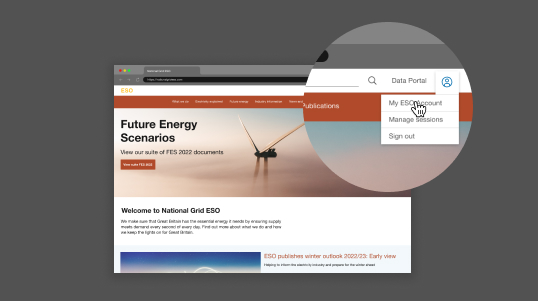The Beyond 2030 report builds on top of the Holistic Network Design and makes a set of network recommendations throughout the 2030s.
The report recommends a set of offshore and onshore network upgrades which total an additional £58 billion of direct investment in our electricity networks.
It facilitates the connection of an extra 21GW of offshore wind as well as a breadth of other low carbon generation across Britain.
These recommendations will still need to optimised through careful design to minimise impacts on communities and ensure that their wider benefits are seized upon.
This transitional plan is a stepping-stone before we develop the fully Centralised Strategic Network Plan which will be published in 2026.

Beyond 2030 Report
Discover more about our recommendations for how the offshore and onshore network should develop throughout the 2030’s.
Our Beyond 2030 report is best viewed on desktop.
Benefits within the report
- A network to enable the UK government to meet the sixth Carbon Budget. To deliver the required network by 2035, the actions in the Transmission Acceleration Action Plan are required.
- Creates the backbone needed to transfer power for and to future industry.
- 20,000 jobs will be created and sustained annually, with 90 percent of these benefits felt outside of London and the southeast.
- Facilitates the connection of a breadth of other low-carbon electricity generation, including Sizewell C and Hinkley Point nuclear power plants.
- Is a once in a generation expansion of Great Britain’s electricity grid. It proposes a network that has three times more undersea cabling than onshore infrastructure by 2035.
Developing the Beyond 2030 report

What are the next steps in the process?
Both industry stakeholders and Ofgem will review our recommendations. Industry will develop these recommendations further through a Detailed Network Design Phase.
Depending on a recommendation’s maturity, this can involve testing alternative on and offshore solutions, further developing cable routing and technology choices.
We expect industry will engage extensively with communities on these options.
Improving our network development process
As we transition into the National Energy System Operator, we will continue strategic planning across other energy vectors and technologies publishing further plans in 2025 and 2026.
Beyond 2030 annexes
Sets out or holistic design considerations for both our onshore and offshore network recommendations in greater details.
Stakeholder Approach, Engagement and Feedback Report
Outlines how we have embedded stakeholder engagement into our process and considered the feedback we have received in shaping our recommendations.
Interconnector Analysis Report
Outlines the bespoke analysis we have conducted to determine what volume of future electrical interconnection to other countries could be optimal for Great Britain, as well as neighbouring countries.
Previous network development publications
A Holistic Network Design for Offshore Wind
A closer look at what is needed to connect 23GW of offshore wind by 2030.
Electricity Ten Year Statement
ETYS is the ESO’s view of future transmission requirements and the capability of GB’s National Electricity Transmission System (NETS) over the next ten years.
Learn more about the wider onshore network requirements needed to achieve the 2030 ambition.
Find out more about the offshore coordination project.
Other documents
| Name | Published Sort ascending |
|---|---|
| Comprehensive List of the Onshore and Offshore Network | 19 Mar 2024 |
| Beyond 2030 glossary | 19 Mar 2024 |
| Competition in electricity transmission report | 19 Mar 2024 |








